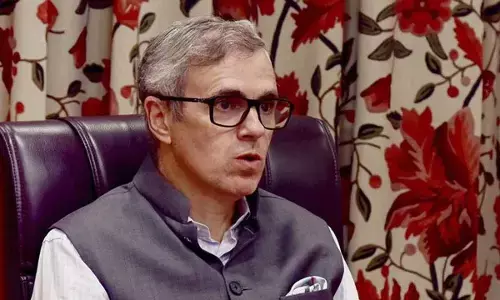Why people should make their retirement plans keeping unexpected shocks in mind

Despite knowing the importance of retirement planning, people rarely plan for this as a standalone objective, according to a survey. Employers are seen as a vital player in raising awareness about retirement
Over the week, I’ve chanced upon an interesting report on retirement readiness survey in the year 2020 by PGIM India Mutual Fund during December 2019 and January 2020. This was conducted across 16 cities of which 57 per cent of the respondents comprise from metros. The survey covered 8016 Indian adults of which 76 per cent of them were men belonging to Sec A/B/C (proportion of 45 per cent, 37 per cent and 18 per cent respectively). The age group ranged between 22 to 50 years of age with 31 per cent each belonging to 22-30 and 41-50 while 38 per cent comprise of ages between 31 and 40.
Some of the survey findings were startling while others were very insightful. For instance, retirement remains at the bottom of the priorities at eighth position. Children’s needs and their security feature at the top two priorities. Leading a peaceful life (i.e., without any stress) is placed at the sixth and improving lifestyle a tad above retirement. Security of spouse, medical emergencies and being fit form the middle of the priorities for Indians.
Another classic observation is in the change of wealth goals as the consumers grow older, also with increasing income. The up to 40yr age group respondents were seeking to generate higher returns on the money and to become financially secure. The latter part of the respondents i.e., 41-60 were more concerned to starting/growing own venture/business, generate alternate income and to develop passive income by willingness to learn new skills and monetizing hobbies. On an average, Indians plan for retirement at the age of 33 but those who’ve not done begin on an average at the age of 51.
The incidence of planning for retirement increases as income rises and is positively correlated with quality of life. Over 60 per cent of those earning over Rs 50,000 per month have mapped it out and this falls to about half of them when their incomes are below Rs 30,000. The silver lining is that those who plan for retirement does make detailed as 95 per cent of them confirm that their plans cover most of their goals and expenses. About 59 per cent of them mentioned they strictly follow their retirement plan.
Moreover, most of the respondents are aware of the advantage of having a good financial advice. On what they seek from a financial advisor, 77 per cent of them look for knowledge of various products, 67 per cent consider market awareness, 61 per cent look for sensitivity towards customer needs while only a quarter of them emphasized the need for personal interaction. While returns on investment forms the highest expectations (at 69 per cent) from a good advice, 55 per cent expect to build a balanced/diversified portfolio, 53 per cent expect to reduce risk of loss, 47 per cent expects to help guide right instruments and only about a quarter expect to reduce workload on managing money.
Employers are seen as a vital player in raising awareness about retirement. Majority i.e., 86 per cent of the respondents felt that either their employer always or sometimes motivated to pursue retirement planning. Also, about 88 per cent of them feel that they’re either strongly or somewhat are motivated if the employer facilitates retirement planning. For employers, these measures help for a more devoted employees, which is an extended case study done by the PGIM parent group across countries like Taiwan and US. Most worries during post-retirement are centered around cost of living at 57 per cent, at 55 per cent over health of self/spouse/parents, about half for lack of support from family in the future. 40 per cent of the respondents feel living longer or outliving their money as a major worry which is one of the cornerstones of retirement planning. While about a quarter of the surveyed expressed concern over inflation and slowdown in economic conditions, about fifth were anxious over loans/liabilities and 16 per cent were concerned with accidental disability/critical or terminal illness.
Cultural shifts are also contributing for urgent priority for retirement planning as more and more Indian families turned nuclear. Also, the prospects of children’s turning pessimistic, many fear that their children can’t fend for themselves and their ability to help will decline with age. This is driving the elder generation to not just plan for their own retirement but also to be able to provide for their children, if required.
Despite knowing the importance of retirement planning, rarely plan for this as a standalone objective. Most haven’t provided for retirement as they haven’t begun for it yet or they’ve a fluidic approach i.e., an all-purpose plan which eventually could be used for retirement, if any left. More than half of the urban respondents, 51 per cent of them had no plans for their retirement, of which 42 per cent have neither an alternative income source nor any retirement plan. Another critical observation is the lack of awareness on the amount required for life after retirement and only little over half of them availed help/assistance on planning.
The productivity of the investments or product profile also depends on those who have a plan versus those who don’t. The percentage of allocation to stocks, mutual funds, debentures, recurring deposits, postal deposits, NPS, pension plans, PPF and gold is higher for those who have a retirement plan while they’re conspicuously lower in instruments like fixed deposits and life insurance. While those who’ve planned are confident of their retirement goal achievement though their planning for external shocks is very low at only one-third of them have discounted for and only little over half have considered unexpected events.
In conclusion, as incomes rises more and more Indians seek for better advice. Employers, governments and financial intermediaries have a greater role to play otherwise could jeopardize the prosperity of the citizens as traditional family structures collapse, conventional investments avenues turn unproductive and economic situations turn volatile.
(The author is a co-founder of “Wealocity”, a wealth management firm and could be reached at [email protected])














